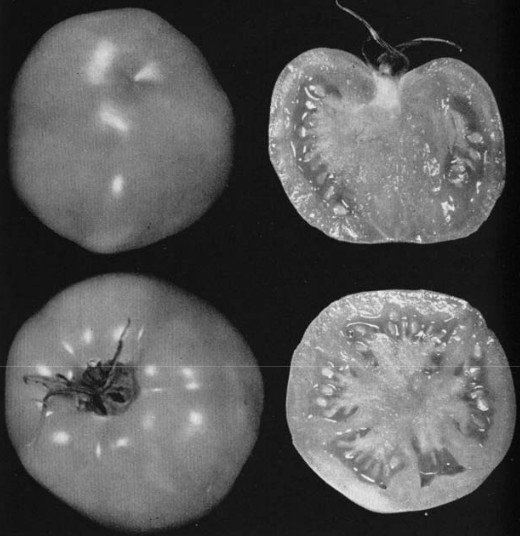 Variété précédente
Variété
suivante
Variété précédente
Variété
suivante
 Variété précédente
Variété
suivante
Variété précédente
Variété
suivante
Retour à la page "Passion tomate"
Mise à jour le : 11-05-2020
Long Calyx Forcing OP
Fruit rouge rond. Croisement de "Lloyd Forcing" et de "Marglobe".
Obtention probable vers 1926.
Variété citée en 1936 dans l'étude "New Wilt-Resistant Tomato varieties for field and greenhouse
Auteur :W. A. Huelsen de l'Université de l'Illinois. College of Agriculture. Agricultural experiment station and service in agriculture and home economic.
Variété ayant servie au développement de "Trucker Forcing" en 1955.
Origin. A ninth generation selection out of a cross between Lloyd Forcing and 11arglobe. Vine type. Resembles Sureset Forcing in vine character and rate of growth. The leaves, however, are a little more finely cut than Sureset Forcing. The set averages about 2.5 marketable mature fruits per cluster in the fall and 5.0 in the spring. Fruits. Red, globe-shaped, thick rind, four to five seed cells, and not many seeds. Fruits are fleshy, only slightly acid in flavor, and not very juicy. The core is small and the appearance of the fruits is outstanding when in the market package. Like many globe-shaped varieties, air pockets form under certain conditions and give the fruits a slightly more angular appearance than normal. The flesh is rather soft in texture, but the skin seems to be so tough that an unusual amount of pressure is required to crack the fruits, as proved by actual tests. The fruits are very attractive because of the unusually long calyxes which, in contrast to other varieties, adhere very firmly to the fruits and are not readily broken off in picking and handling. Yields. Long Calyx Forcing yields more than Bonny Best and Marglobe in the fall (see table) , but it is inferior to Urbana Forcing, Sureset Forcing, Blair Forcing, and Lloyd Forcing. In the spring, however, Long Calyx Forcing is among the best yielders. Its fruits averaged about 4 ounces each in four successive spring crops. This is a large size for a greenhouse tomato. Use. Long Calyx Forcing should be used only for late winter and spring forcing. It should be of value to the grower who wants an exceptionally attractive pack. It matures about 25 percent more of its crop during the first month of picking than Marglobe, which places it slightly earlier in maturity than Lloyd Forcing.